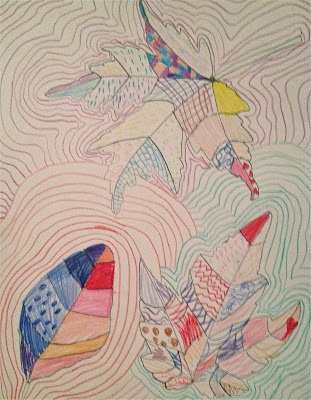In our first few classes of the school year we spent our time reviewing art room procedures and expectations. Exciting I know! The upper elementary and middle school school students created a name tag for their introduction assignment. I asked that they tell me a little about themselves in each space. They were able to color their tag in with any media of their choice. The students also filled out questioner about their knowledge and interest in the visual arts thus far.
Middle school then began the year studying Japenese Notan's.
"Notan" is the term used by the Japanese to express "light-dark" as an element of design. We understand this term as positive space and negative space, dividing the idea of light-dark into separate components. On paper it is easy to see that dark shapes cannot exist without a surrounding area of white. White shapes cannot exist without dark to define it. The two elements are really one, they complete one another. The Eastern culture from which Notan arose, seeks a more balanced view of the world. The classic yin/yang symbol is a reflection of this desire for balance.
After looking at a short PowerPoint presentation the students created a design from a five inch square paper. The trick was for every object they cut, they had to flip the piece to mirror the blank piece it came from. Here are some of our finished examples.







































